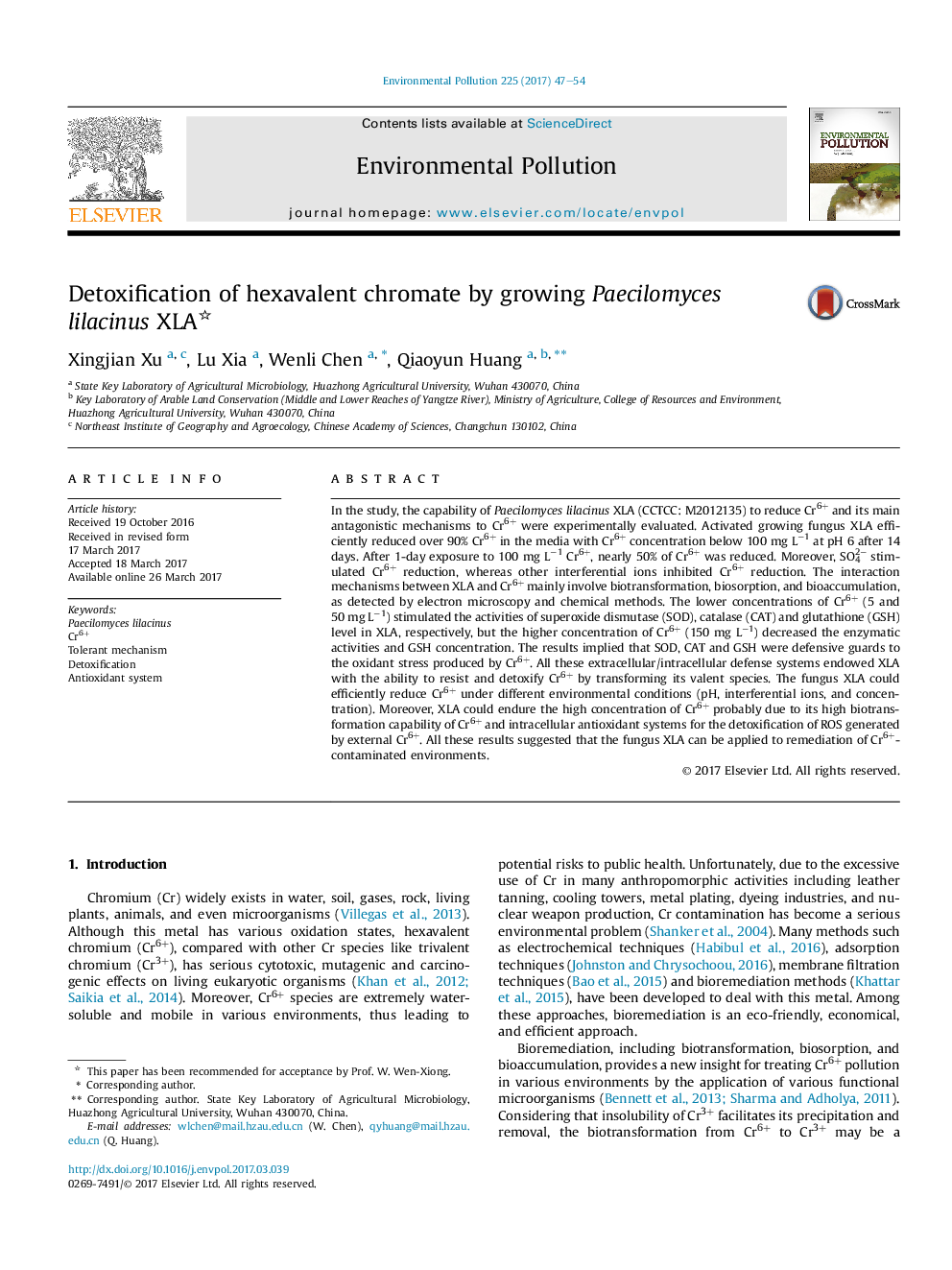| کد مقاله | کد نشریه | سال انتشار | مقاله انگلیسی | نسخه تمام متن |
|---|---|---|---|---|
| 5748910 | 1619148 | 2017 | 8 صفحه PDF | دانلود رایگان |

- High efficiency of growing fungus strain XLA in reducing Cr6+.
- Biotransformation, biosorption and bioaccumulation are involved in reducing Cr6+.
- Extra/intracellular defense systems of XLA are contributed to Cr6+ detoxification.
- Responses of Cr defense systems to various Cr6+ levels are diverse.
In the study, the capability of Paecilomyces lilacinus XLA (CCTCC: M2012135) to reduce Cr6+ and its main antagonistic mechanisms to Cr6+ were experimentally evaluated. Activated growing fungus XLA efficiently reduced over 90% Cr6+ in the media with Cr6+ concentration below 100 mg Lâ1 at pH 6 after 14 days. After 1-day exposure to 100 mg Lâ1 Cr6+, nearly 50% of Cr6+ was reduced. Moreover, SO42â stimulated Cr6+ reduction, whereas other interferential ions inhibited Cr6+ reduction. The interaction mechanisms between XLA and Cr6+ mainly involve biotransformation, biosorption, and bioaccumulation, as detected by electron microscopy and chemical methods. The lower concentrations of Cr6+ (5 and 50 mg Lâ1) stimulated the activities of superoxide dismutase (SOD), catalase (CAT) and glutathione (GSH) level in XLA, respectively, but the higher concentration of Cr6+ (150 mg Lâ1) decreased the enzymatic activities and GSH concentration. The results implied that SOD, CAT and GSH were defensive guards to the oxidant stress produced by Cr6+. All these extracellular/intracellular defense systems endowed XLA with the ability to resist and detoxify Cr6+ by transforming its valent species. The fungus XLA could efficiently reduce Cr6+ under different environmental conditions (pH, interferential ions, and concentration). Moreover, XLA could endure the high concentration of Cr6+ probably due to its high biotransformation capability of Cr6+ and intracellular antioxidant systems for the detoxification of ROS generated by external Cr6+. All these results suggested that the fungus XLA can be applied to remediation of Cr6+-contaminated environments.
182
Journal: Environmental Pollution - Volume 225, June 2017, Pages 47-54